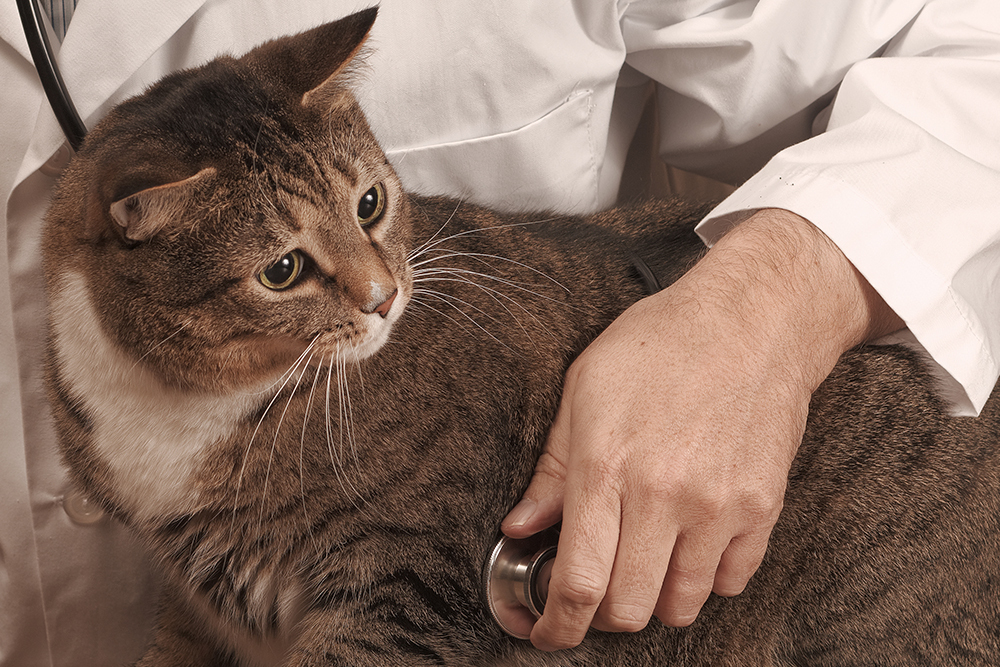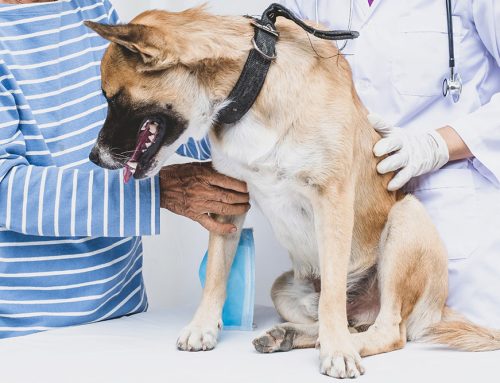Understanding Chronic Pain in Senior Pets
Chronic pain in senior pets can make major impacts on their quality of life. At Adamson Veterinary Services in Salem, Ohio, we provide comprehensive care to manage and alleviate pain in aging pets. Recognizing and addressing pain is essential for their well-being and your peace of mind.
Recognizing the Signs of Chronic Pain in Your Senior Pet
Chronic pain, which persists over time, differs from the sudden onset of acute pain. Early detection can lead to quicker management and less discomfort for your pet.
Common Symptoms in Dogs and Cats
Pets often mask pain, but certain signs may indicate discomfort:
- Decreased activity or lethargy
- Limping or difficulty moving
- Trouble climbing stairs or jumping
- Changes in grooming habits, such as neglecting their fur
- Reduced appetite
- Excessive panting
- Hiding and changes in routines
These symptoms may start subtly but can progress if not addressed. For instance, decreased activity might be mistaken for normal aging but could indicate significant joint pain or arthritis. Early intervention can prevent further deterioration and improve your pet’s quality of life.
For more detailed symptom descriptions, visit Common Pet Pain Signs.
Behavioral Changes Indicating Pain
Behavioral changes can also be significant indicators:
- Increased irritability or aggression
- Less interaction with family members
- Seeking more solitude than usual
These changes suggest it might be time to consult with a professional about potential pain issues. Ignoring these signs can lead to more severe health problems and a decreased quality of life as the pet becomes less mobile and more isolated.
Causes of Chronic Pain in Senior Pets
Understanding the reasons behind chronic pain can help in finding the right treatment approach.
Medical Conditions Leading to Pain
Several conditions can lead to chronic pain in senior pets, including:
- Arthritis, common in older dogs and cats, affecting their joints and mobility
- Dental disease, which can cause severe mouth pain
- Hip dysplasia, particularly in larger breed dogs
- Cancer, which may lead to discomfort as it progresses
Without timely intervention, these conditions can worsen, leading to more complex medical issues. For instance, untreated arthritis can cause significant joint degeneration, making mobility increasingly difficult and painful.
For more information on conditions that can cause pain, visit The Why and the “Ow:” 7 Conditions That Cause Pain in Pets.
Age-Related Changes
As pets age, their bodies undergo changes that can predispose them to pain. Understanding these changes can help in monitoring and managing their health. For example, the natural wear and tear on joints and the decrease in muscle mass can exacerbate conditions like arthritis, making proactive care and regular veterinary check-ups essential.
Diagnosing Pain in Your Senior Pet at Adamson Veterinary Services

Proper diagnosis is crucial for effective treatment. Our approach includes:
Tools and Techniques Used in Diagnosing Chronic Pain
We use a variety of diagnostic tools to determine the source and extent of pain, including:
- X-rays to view joint degeneration or other internal issues
- Comprehensive blood tests to rule out or confirm certain diseases
- Thorough physical exams to assess pain response
These methods help us identify underlying issues that may not be immediately apparent. For example, an X-ray can reveal the extent of arthritis in a pet’s joints, allowing us to tailor a treatment plan that targets specific areas of discomfort.
Learn more about our diagnostic services on our Diagnostics Services page.
Treatment Options for Managing Chronic Pain in Senior Pets
Pharmacological Treatments
We prescribe various medications to manage pain effectively:
- NSAIDs specifically designed for pets to reduce inflammation and pain
- Opioids for severe pain cases under strict veterinary supervision
- Supplements like glucosamine to support joint health and omega fatty acids to reduce inflammation
- Newer medications, like monoclonal antibody therapies, may be an option for month-long pain relief
Each medication is chosen based on the pet’s specific needs and overall health profile. Following the veterinarian’s prescription guidelines is crucial to avoid potential side effects or interactions with other medications.
Non-Pharmacological Treatments
We may also recommend several non-pharmacological treatments:
- Physical therapy to improve mobility and strength
- Acupuncture, which can manage pain and improve life quality
- Dietary changes to maintain optimal weight and reduce joint stress
These treatments can provide significant relief and improve overall well-being. For instance, physical therapy can enhance muscle strength and joint flexibility, while acupuncture can help reduce pain and inflammation naturally.
For more on these services, visit our Wellness Exams and General Care pages.
Surgical Options When Necessary
In some cases, surgery may be the best option to alleviate pain, primarily when caused by physical anomalies that can be corrected surgically.
Surgical interventions might include procedures like joint repair or tumor removal. While surgery offers a more permanent solution in some cases, it requires careful consideration and post-operative care to ensure a successful recovery.
Home Care and Lifestyle Adjustments for Pets with Chronic Pain
Creating a comfortable home environment plays a critical role in managing chronic pain:
Tips for Home Adaptation
- Provide soft bedding to relieve pressure on sore joints.
- Keep essentials like food, water, and litter boxes accessible without the need for climbing or jumping.
- Add rugs to slippery floors
Additionally, installing ramps or pet stairs can help pets access their favorite spots without strain, and maintaining a warm, draft-free environment can reduce joint stiffness.
Diet and Nutrition
A balanced diet rich in essential nutrients can help manage inflammation and maintain healthy weight levels, reducing stress on joints. Consider incorporating omega-3 fatty acids and antioxidants into your pet’s diet, known to support joint health and reduce inflammation.
Exercise and Weight Management
Light exercise helps keep joints mobile and muscles strong but should be tailored to your pet’s comfort level and physical capability. Short, regular walks or gentle play sessions can prevent muscle atrophy and stiffness, enhancing your pet’s overall quality of life.
Monitoring and Ongoing Care at Adamson Veterinary Services
Importance of Regular Check-Ups
Regular veterinary visits are essential for adjusting pain management plans as needed and ensuring your pet remains comfortable as they age. Routine check-ups allow for early detection of any emerging health issues, enabling prompt intervention and better outcomes.
Effective Communication with Your Vet
Keeping track of any changes in your pet’s behavior or symptoms and communicating them during visits helps us tailor their care more effectively, especially when signs are chronic and subtle. This proactive approach ensures that any adjustments in treatment are made swiftly, preventing further complications.
FAQs about Chronic Pain in Senior Pets
Q: How can I tell if my pet is in pain if they don’t show obvious symptoms?
A: Pets often mask their discomfort, but subtle changes in behavior, such as decreased activity, irritability, or changes in eating habits, can indicate pain. Observing these signs and consulting with a veterinarian can help in early diagnosis.
Q: What are the long-term effects of chronic pain if left untreated?
A: Untreated chronic pain can lead to decreased mobility, muscle atrophy, and a significantly reduced quality of life. It can also cause behavioral changes, such as increased aggression or withdrawal.
Q: Can chronic pain in pets lead to emergencies?
A: Yes, if chronic pain results in severe mobility issues or if an underlying condition, like cancer, progresses without treatment, it can lead to emergencies. Immediate veterinary attention is crucial in such cases to prevent further health deterioration.
Q: Are there preventive measures I can take to avoid chronic pain in my pet?
A: Regular veterinary check-ups, maintaining a healthy weight, providing a balanced diet, and ensuring regular, appropriate exercise can help prevent the onset or severity of chronic pain conditions in pets.







Leave A Comment